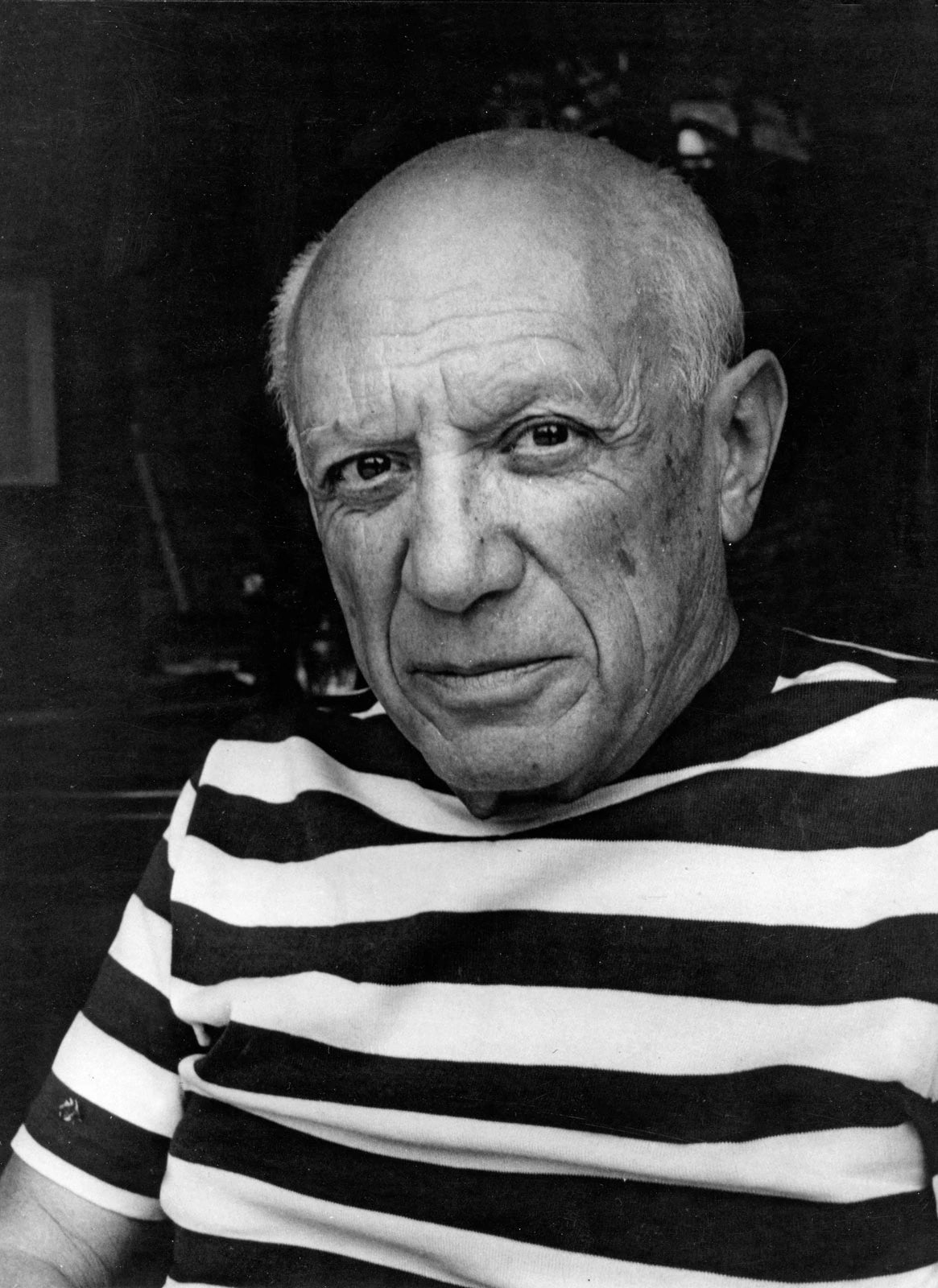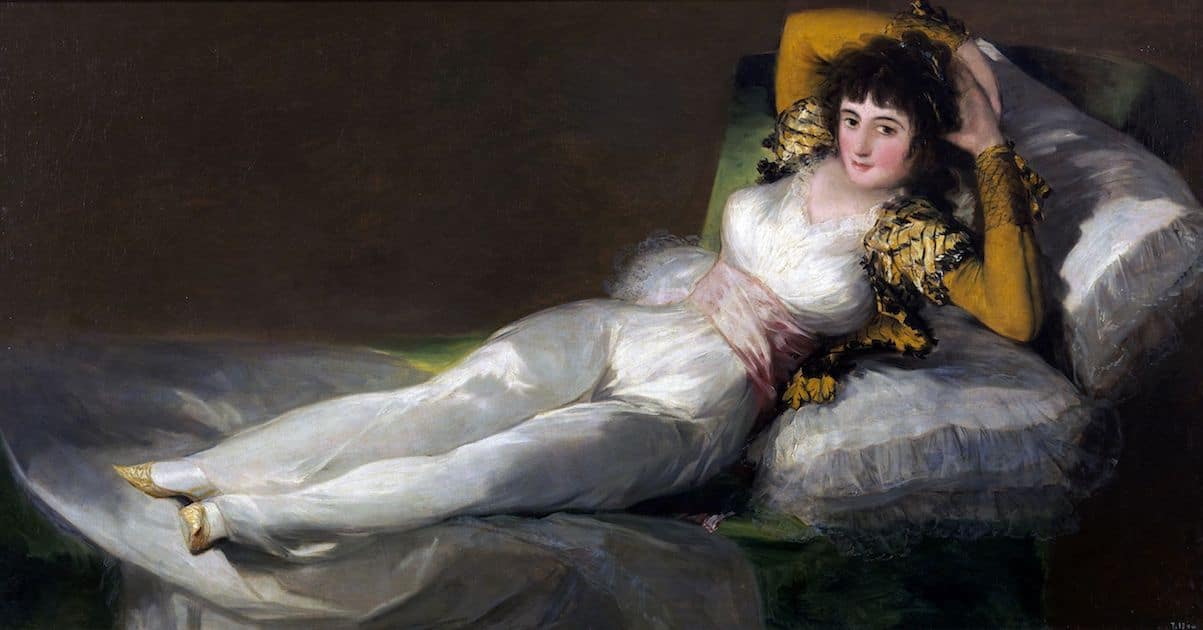
Some Spanish painters crossed all borders to create some of the most famous currents of art today. An example of this is the case ofPablo Picasso (1881-1973), who was the creator, along with George Braque, of the Cubist movement.All these artists told the story of Spain in some way, capturing in their best works the culture, traditions and their experiences in the land where they were born. Discover in this list some of the most famous Spanish painters.
Pablo Picasso
The innovative and impactful Spanish artistPablo Picasso (1881–1973) contributed to the development of the art world by challenging its conventional forms. The considerable work ofPablo Picasso includes more than 20,000 paintings, prints, drawings, sculptures, ceramics, theater sets and costumes, from diverse artistic movements, such as Cubism, Surrealism, Neoclassicism and Expressionism. Together with George Braque, he created Cubism, a way of representing three-dimensional space on a two-dimensional plane. In his works "Guernica", "Les Demoiselles d'Avignon", "The Weeping Woman", there is a search for inspiration in African art and the events around it. With an easily identifiable language, the Spanish artist marked the artistic field, influencing artists until today. Perhaps the most influential artist of the 20th century,Pablo Picasso painted his most famous work, Guernica (1937), in response to the Spanish Civil War. At auction, several paintings byPablo Picasso sold for over $100 million, but the Spanish artist's serigraphs and lithographs are more affordable on the secondary market. The tireless artist has been the subject of exhibitions at the world's most prestigious institutions, from the Museum of Modern Art and Center Pompidou to the Stedelijk Museum and Tate Modern.
Salvador Dalí
By creating a plastic language with fascinating compositions, the Spanish artistSalvador Dalí (1904–1989) became one of the leading figures of surrealism. This movement, which fits in with the vanguards of the 1920s, proposed the transposition and liberation of the unconscious in plastic experiences. His works «The Temptation of St. Anthony» (1946) and «The Persistence of Memory» (1931) presented at the time a completely innovative way of understanding the irrational, through objects such as melted clocks and extraordinary animals. The fantastic prints, paintings, sculptures, films and writings ofSalvador Dalí helped to consolidate the identity of the movement. When working with psychoanalytic ideas,Salvador Dalí he created fantastic creatures and landscapes that could unsettle and impress. In addition to being an artist,Salvador Dalí he was a writer, filmmaker and during his career he cultivated his eccentric personality, based on his behavioral and physical characteristics, such as his famous mustache and his pet an anteater (ant-bird).Salvador Dalí exhibited widely in his lifetime, and his works belong to the collections of institutions such as the Tate, the Museum of Modern Art and the Art Institute of Chicago, among others. His work reached millions of euros on the secondary market, ranging from painting, sculpture, serigraphs, lithography, among other techniques.

Antoni Gaudi
Antoni Gaudí's architectural contributions to Barcelona in the late 19th and early 20th centuries persist as some of the most innovative and imaginative buildings in the world. With his civic and residential commissions, as well as design work, Gaudí created work that typifies the synthesis of Art Nouveau and the Arts & Craft movement prevalent in Catalan modernism. Among his most famous projects are the Casa Milá and the still incomplete Sagrada Familia, which reinterprets the Gothic architecture of the cathedral through the curvilinear naturalism of Art Nouveau. While owing to earlier aesthetic lineages, Gaudí completely overturned architectural convention, achieving a unique and enduring legacy.

Francisco Goya
Francisco de Goya's stormy, expressive paintings are iconic works of late 18th and early 19th century art. With his thick brushstrokes, high-contrast color palettes, and dark psychological themes, Goya created a crucial bridge between the style and subject matter of the Old Masters and the modernists' interests in politics and the surreal; Pablo Picasso It is Salvador Dalí, named Goya an important ancestor of their own practices. Goya was equally famous for his engravings and drawings, which were both monstrous and more cheerful and satirical. His most famous works include “The Third of May 1808” (1814) and “Saturn Devouring One of His Sons” (1820–23) – violence, whether authoritarian or mythological, is prevalent throughout his work. Goya's paintings have sold for millions on the secondary market and belong in the collections of numerous institutions, including the Metropolitan Museum of Art, the British Museum, the Museo del Prado, the Frick Collection and the National Gallery of Art in Washington, DC
Joan Miró
Valuing artistic freedom,Joan Miró (1893-1983) pioneered the method of drawing to express the inner workings of the human mind. His intricate compositions combined abstract elements with recurring figures such as eyes, garden, moon and birds. The Spanish artist's first works were lithographs, having created more than a thousand lithographs in his extensive artistic production. He is one of the most outstanding artists of surrealism for the creation of his own artistic language, in different supports: drawing, sculpture, painting and engraving. Widely considered one of the leading Surrealists (although he was never officially part of the group),Joan Miró he was also a pioneer of automatism: a method of spontaneous drawing that attempted to express the inner workings of the human psyche.Joan Miró used color and form symbolically, developing intricate compositions and a linear style that combined abstract elements with recurring motifs such as birds, eyes and the moon. During his lifetime, Miró was awarded the Grand Prize for Graphic Work at the 1954 Venice Biennale, shown at the first Documenta exhibition in 1955, and had several high-profile retrospectives. Today, Miró's work – which sold for eight figures at auction – can be found in the permanent collections of the Art Institute of Chicago and the Museum of Modern Art, among other institutions. His sculptures and public murals are installed in cities around the world, including Milan, Paris and Barcelona.
Antoni Tàpies
Antoni Tàpies (1923-2012) was a Spanish artist, known for his mixed media paintings, which incorporated marble dust, found objects and resin (Gray and Green Painting, 1957). Due to his personal experience with the war and the post-war state of the Spanish government, his layered paintings also convey his thoughts on the social issues of the time. Influenced by Joan Miró entered the art world with surrealist works, and later incorporated the ideas of Paul Klee, ending up joining the Informalismo movement. Currently, his works of art are exhibited at the Fundació MuseumAntoni Tàpies in Barcelona, the Museum of Modern Art in New York, the Tate Gallery in London and the Reina Sofia National Museum in Madrid, among others. Antoni Tàpies refined a visual language inspired by a wide range of sources that merge into a complex fusion of materials, gestures and symbols. . the work ofAntoni Tàpies incorporated his extensive personal experience and history, and that of his native Spain and specifically Catalonia. As Tàpies' use of tangible materials to make art emphasizes physical transformation, spiritual transformation is evoked through signs and symbols drawn from Eastern and Western cultures. Tàpies participated in three exhibitions at the Venice Biennale (1952, 1954, 1958) before being selected to represent Spain at the 45th Venice Biennale in 1993, during which he received the Biennale Prize for Painting. In 1984, the artist established the FundacióAntoni Tàpies in Barcelona to promote education and exhibition of modern and contemporary art. The foundation goes back to one of the first exhibitions in its museum, from 1992, entitled Certeza Profunda, on display until 2019.

Diego Velazquez
Official court painter of King Philip IV, Diego Velázquez is considered one of the greatest Spanish artists. He turned his keen powers of observation into faithful portraits of Spanish royalty and, at the height of his career, Pope Innocent X. Famed for the vital likeness of his subjects, Velázquez used free and efficient brushstrokes to evoke strongly atmospheric scenes pierced by dazzling colors and ornamentation. His masterpiece is Las Meninas, a classic example of baroque, which captures a young princess and her parents, the king and queen, posing for the artist. Velázquez died four years after its completion, but his influence reverberated through the 19th and 20th centuries: it had a particularly formative effect on Edouard Manet and attracted the recurring fascination ofPablo Picasso.




